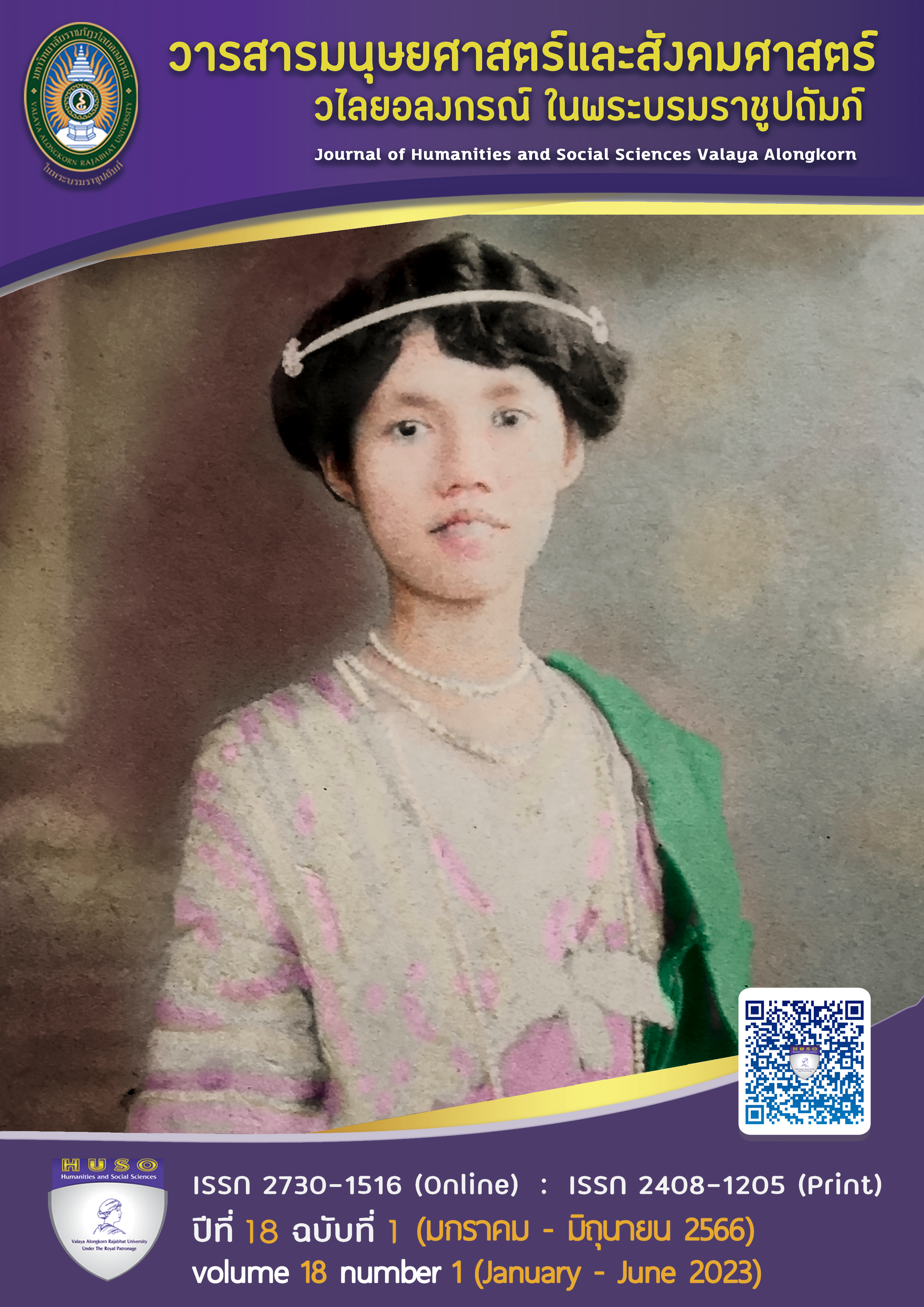CLASSIFICATIONS OF SEMANTIC DENOTATIONS OF ADVERBIAL CLAUSES: PERSPECTIVES FROM NOVELS IN ENGLISH
Main Article Content
Abstract
This study examines the classifications of semantic denotations of adverbial clauses in novels in English. While related previous studies concentrated on the classifications of semantic denotations of adverbial clauses in the materials of EFL writing, English cookbooks and English daily newspapers (Durant, Brenchley & Clarkson, 2020; Wongkittiporn, 2021), this study contributes to the field by examining their use in novels in English in order to present the new perspective of semantic denotations of adverbial clauses. The sources of data were gathered from Robinson Crusoe (Defoe, 2013), Naked Lunch (Burroughs, 2016) and Wide Sargasso Sea (Rhys, 2016) and The War of the Worlds (Well, 2018) due to their high sales volumes (www.amazon.com). The approximate number of data collection in this study is 200,000 words which provide 50 tokens referring to sentences. According to the data analysis, the classifications of semantic denotations of adverbial clauses follow Swan (2016), who proposed eight classifications of adverbial clauses. The classifications are temporal adverbial clauses, concessive adverbial clauses, adverbial clauses of reason, manner adverbial clauses, adverbial clauses of comparison, adverbial clauses of purpose, adverbial clauses of place and adverbial clauses
of condition. Three English linguists were asked to validate the data analysis via the process
of inter-rater reliability to ensure the accuracy of the data analysis. The results of this study reveal that the semantic denotations of temporal adverbial clauses occur the highest at 68 percent. This is explainable by the principle of iconicity of sequence and end-weight principle. It is expected that the results of this study will be beneficial for learners of English as a Foreign Language (EFL) to use adverbial clauses in narrative writing appropriately.
Article Details

This work is licensed under a Creative Commons Attribution-NonCommercial-NoDerivatives 4.0 International License.
ลิขสิทธิ์บทความวิจัยที่ได้รับการตีพิมพ์เผยแพร่ในวารสารมนุษยศาสตร์และสังคมศาสตร์ วไลยอลงกรณ์ ในพระบรมราชูปถัมภ์ ถือเป็นกรรมสิทธิ์ของคณะมนุษยศาสตร์และสังคมศาสตร์ มหาวิทยาลัยราชภัฏวไลยอลงกรณ์ ในพระบรมราชูปถัมภ์ ห้ามนำข้อความทั้งหมดหรือบางส่วนไปพิมพ์ซ้ำ เว้นแต่จะได้รับอนุญาตจากมหาวิทยาลัยเป็นลายลักษณ์อักษร
ความรับผิดชอบ เนื้อหาต้นฉบับที่ปรากฏในวารสารมนุษยศาสตร์และสังคมศาสตร์ วไลยอลงกรณ์ ในพระบรมราชูปถัมภ์ เป็นความรับผิดชอบของผู้นิพนธ์บทความหรือผู้เขียนเอง ทั้งนี้ไม่รวมความผิดพลาดอันเกิดจากเทคนิคการพิมพ์
References
Al-Gharabally, M. (2015). The writing difficulties faced by L2 learners and how to minimize
them. International Journal of English Language and Linguistics Research, 3(5), 42-49.
Altenberg, B., & Tapper, M. (2014). The use of adverbial connectors in advanced Swedish
learners' written English. Bengt Altenberg & Marie Tapper (ed.). In Learner English
on computer (pp. 80-93). Routledge.
Burroughs, W. S. (2016). Naked Lunch. Penguin Classics.
Defoe, D. (2013). Robinson Crusoe. Penguin Classics.
Diessel, H. (2008). Iconicity of sequence: A corpus-based analysis of the positioning of
temporal adverbial clauses in English. Cognitive Linguistics, 19(1), 475-482.
Durant, P., Brenchley, M., & Clarkson, R. (2020). Syntactic development across genders in
children’s writing: The case of adverbial clauses. Journal of Writing Research, 12(2),
-452.
Eitelmann, M. (2016). Support for end-weight as a determinant of linguistic variation and
change. English Language & Linguistics, 20(3), 395-420.
Kim, J. S. (2005). The effects of a constructivist teaching approach on student academic
achievement, self-concept, and learning strategies. Asia Pacific Education Review,
(1), 7-19.
Larsen-Freeman, D., Celce-Murcia, M., Frodesen, J., White, B., & Williams, H. A. (2016).
The grammar book: Form, meaning, and use for English language teachers. National
Geographic Learning.
Li, T. (2020). Application of iconicity to English teaching. Higher Education Studies,
(2), 13-23.
Melchers, G., & Shaw, P. (2013). World Englishes. Routledge.
Promsupa, P., Varasarin, P., & Brudhiprabha, P. (2017). An analysis of grammatical errors in English
writing of Thai university students. Hrd Journal, 8(1), 93-104.
Radford, A. (2009). An introduction to English sentence structures. Cambridge University Press.
Rhys, J. (2016). Wide Sargasso Sea. Penguin Classics.
Ryan, R. M., & Deci, E. L. (2017). Self-determination theory: Basic psychological needs in
motivation, development, and wellness. Guilford Publications
Savignon, S. J. (2018). Communicative competence. The TESOL Encyclopedia of English
Language Teaching, 1-7.
Seo, Y., & Kim, C. (2020). The Use of Short Fiction in a Writing Class: Pedagogical Suggestions for
Secondary Level Teachers in EFL Settings. English Teaching, 75(1), 119-139.
Siahaan, J. (2013). An analysis of students’ ability and difficulties in writing descriptive
texts. Journal of English and Education, 1(1), 114-121.
Sæbø, K. J. (2012). Adverbial clauses. K. von Heusinger, C. Maienborn & P. Portner (eds.), In
Semantics: An International Handbook of Natural Language Meaning (pp. 1420–1441). Mouton de Gruyter.
Swan, A. (2016). Practical English usage. Oxford University Press.
Syvak, O. (2018). Importance of grammar in ESP. Science and Education a New Dimension.
VI(54), 50-52.
Wells, H. G. (2018). The war of the worlds. Penguin Classics
Wongkittiporn, A. (2021). Adverbial clauses in English cookbooks. Thoughts, 2021(1), 72-104.


